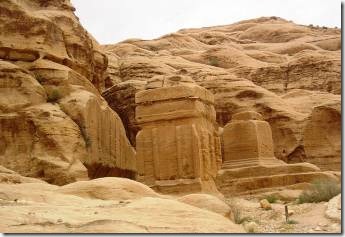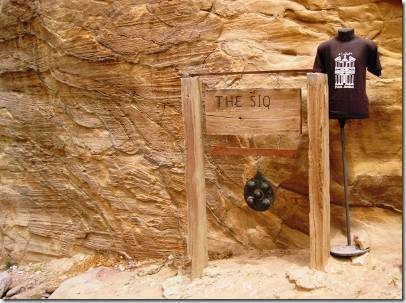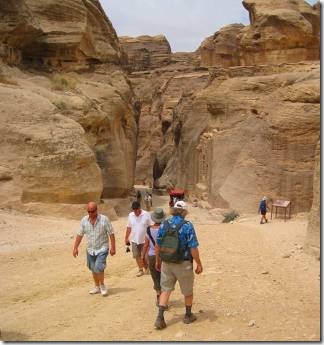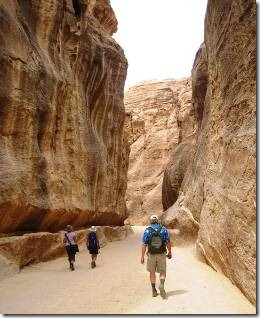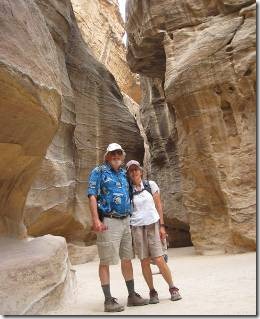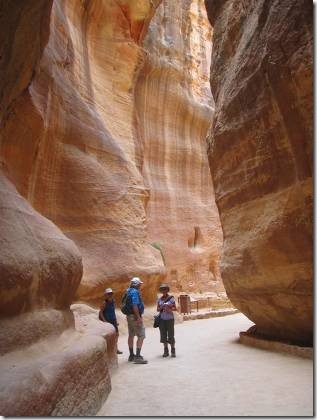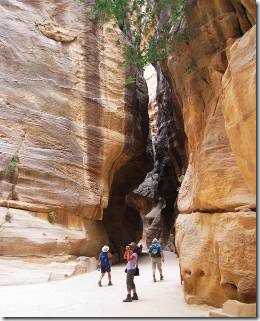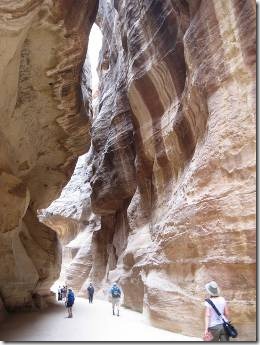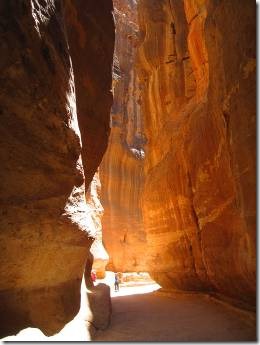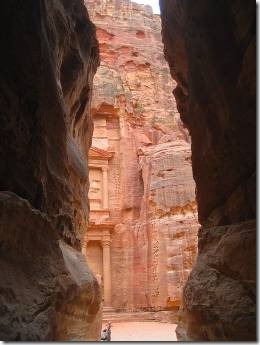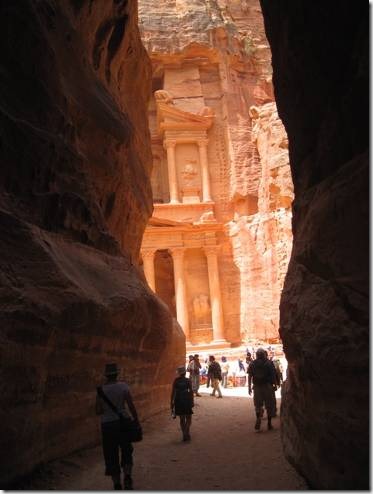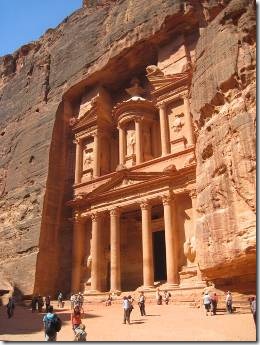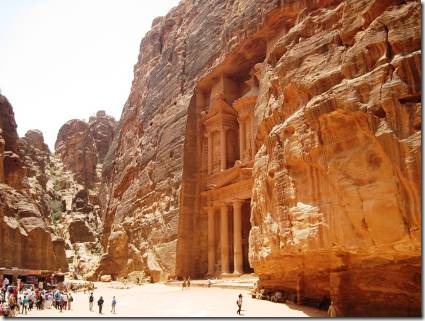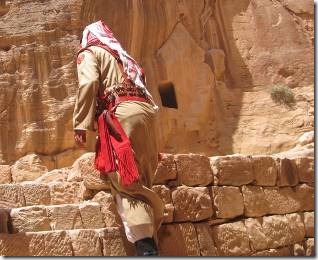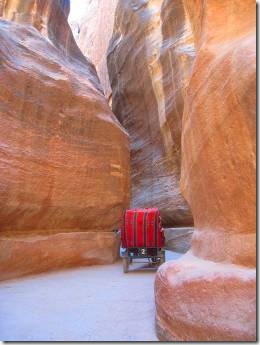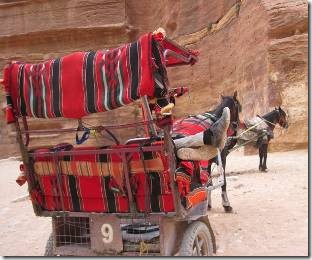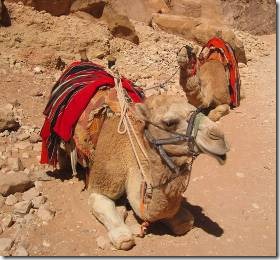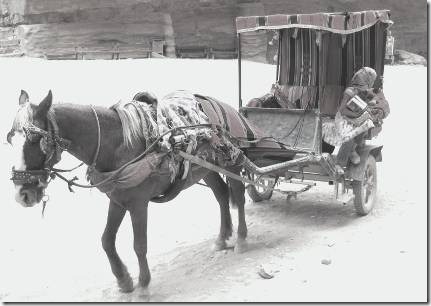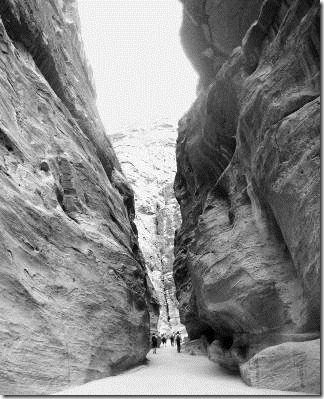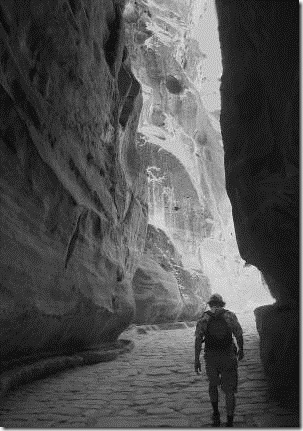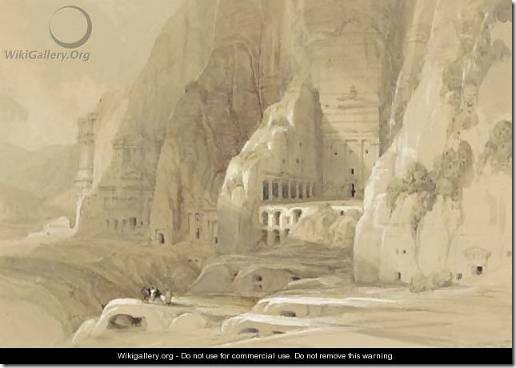Shalom
One could spend days and days in Petra studying and photographing the ruins, or better yet sketching them with water colors. Or you could do as much as you could in 2 days and be amazed at and grateful for the experience. I was thinking that, along with our recent photos of Petra, we have the Western Wall and Jerusalem, the Forbidden City of China, the Taj Mahal, the Potala Palace in Tibet, Mount Everest, the Grand Canyon, Michelangelo’s statue of David and the Sistine Chapel, an imaginary line on the Equator in our boat, Roanoke, Virginia in a hot air balloon? Ok, I wish I’d skipped the hot air balloon, but really, how lucky am I? How many people get to see and experience these things for real, and my list really is much longer. It really is a great gift to be able to travel.
Because we’d gotten up early Monday morning and crossed the border into Jordan at 6:30 am, we had almost a full day in Petra even after the 2 hour drive from the border to our hotel. We dumped off our stuff and were shuttled down to the park entrance. A two day ticket cost 55 Jordan dinars equal to about $78 US per person. That’s about the most we’ve ever paid as an entrance fee. A one day ticket is 50 JD so not much of a savings and we were told it would take 2 days at least for a worthwhile visit. It was money well spent.
I had 3 favorite parts: The walk through the Siq, the hike to the High Place of Sacrifice, and the hike to the Monastery. This first email is about The Siq. I actually have little interest in ancient Rome or Greece. But I am starting to be more curious about Jewish history. Maybe all those years in Muslim countries? Maybe being here in Israel? Maybe being 61? Who knows? So I read about Petra and learned that Aaron was buried just beyond the High Place of Sacrifice. In Bruce Feiler’s Walking the Bible a theory is proposed that rather than wander the desert for 40 years, the Israelites spent most of that time in Petra because it had a supply of water. As for the Roman Colonnade or the tombs or temples…well that just wasn’t what interested me. But all of the geology and geography was stunning. Like Georgia O’Keeffe, I prefer places not so crowded with trees.
On the way to The Siq you get bombarded with offers for a horse ride “that is included with you ticket.” But what isn’t included is the 10 JD “tip” for the guy whose horse you’ll ride. We opted to walk turning down offers for donkey taxis, camels, or carriage rides.
The very innovative and assimilating Nabateans created Petra so here is a bit about them.
Understanding the Nabateans
By Avraham Negev
“In 312 B.C. a Greek diplomat and historian named Hieronymus of Cardia visited the Dead Sea and probably the Negev and reported:
“There are many Arabian tribes who use the desert as pasture, [but] the Nabateans far surpass the others in wealth, although they are not much more than 10,000 in number.”
Masters of the desert, the Nabateans were the dominant traders, merchants and caravan guides for centuries. The principal factor that accounts for the Nabatean superiority was their unrivaled ability to procure water in the desert. Hieronymus describes this in detail. In modern terms, the Nabateans transformed concentric nomadism into linear nomadism. The traditional wanderings of ancient nomadic tribes centered around the few permanent natural sources of water—the oases in the desert. The Nabateans, however, learned to line their cisterns with impermeable plaster. These desert cisterns were then filled with water from the occasional rains. In this way, they were able to store water for a year or more. The Nabateans could thus cross the inhospitable deserts of northern Arabia, the Negev and Sinai, finally reaching the harbors of the eastern Mediterranean, where, Hieronymus tells us, they brought caravan loads of spices and aromatics from Arabia. http://members.bib-arch.org/publication.asp?PubID=BSBA&Volume=14&Issue=6&ArticleID=2
“The key to the Spice Route was the Nabatean technique of collecting water in hidden underground cisterns to be used when the traders arrived. In the Negev, Avner took me (Feiler) to a handful of these caverns, which are still remarkably intact. The Israeli army trains soldiers for desert survival by dropping them a few miles from the cisterns and instructing them to find the locations. Few ever do.
Because the Spice Route was so complex an undertaking, the previously nomadic Nabateans were forced to undergo a process of civilizing themselves: organizing a security force, collecting and distributing money, building administrative centers…and the result was Petra” p 383 Walking the Bible, Feiler
Djinn Blocks are the first bit of amazement you encounter.
“Fancifully-named "djinn blocks" (a djinn is an Arabic spirit) are located on the way to the Siq (bab-as-siq, in Arabic). The imposing blocks are well over a person’s height, and are thought to be funerary monuments. The middle one has two shaft graves inside.” http://www.art-and-archaeology.com/jordan/petra/siq/si01.html While in India I’d read William Dalrymple’s book City of the Djinns about Delhi and became a bit fascinated with these spirits so it was neat to encounter them again here in Petra.
The Siq and the T-shirt to prove it.
A "thaniya" is a small crack in a mountain. The city of Petra had two thaniyas, or passages through the mountain. The main one is known as the "siq"… http://nabataea.net/siq.html (This looks like a really good website if you want to learn about Petra.)
The experience is like walking through a mini-Grand Canyon as you are made to feel very small as you crane your neck to look up at the sky through the slit in the rock.
Walking toward the entrance to the Siq.
Walking through the Siq in amazement.
How small we all felt….
The colors and light made me want to take lots of photos both days; our first somewhat overcast but thankfully cooler day and the second much hotter sunny day bringing lots of light and shade ( at least in the Siq but not in the open desert where there was no shade so very hot.)
And then, like Indian Jones, we emerged from The Siq and found ourselves staring at Al-Khazneh, The Treasury.
Part Hellenistic and part eclectic Nabatean design, the façade is 30 meters wide and 43 meters high. It was carved in the 1st century BC as a tomb of an important Nabatean king and maybe later used as a temple.
The buildings were carved out of the sides of sandstone cliffs.
Red stands out dramatically against the stone.
But the older images of Petra weren’t in Kodak color; they were pencil drawings or muted watercolor, so I eliminated the color from some photos and I find them still quite interesting.
A young girl watching for her father.
The Siq. Randal in The Siq
Scottish painter David Roberts (October 24 1797 – November 24, 1864) sketched and painted water colors of many scenes of Petra.
http://whc.unesco.org/en/list/326 http://www.brown.edu/Departments/Joukowsky_Institute/Petra/ for more info about Petra
Ru

